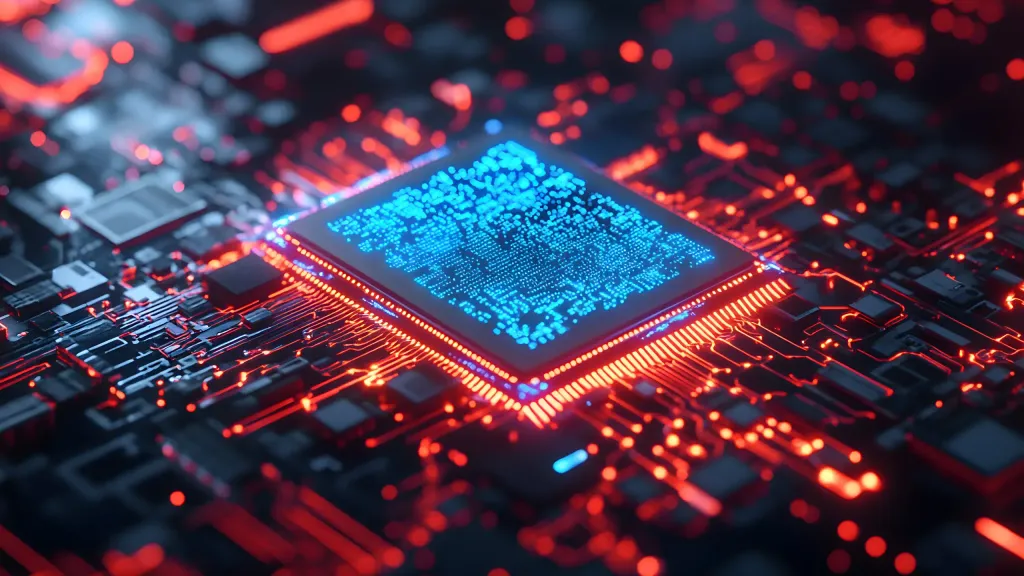Opening Scene
The Spark of a New Arms Race
In the autumn of 2025, on the outskirts of St Joseph County, Indiana, cranes rose over what looked like a new city taking shape. But this wasn't housing or logistics; it was the foundation of Amazon's newest supercomputer campus. Inside those walls, half a million Trainium 2 chips, each designed in-house by AWS, were being linked into a single exascale brain. It was called Project Rainier, and by the end of next year, that brain will double in size.
The number itself is staggering, more than one million AI accelerators, but it's the intent that matters more than the hardware. Amazon is no longer just renting GPUs. It's building its own AI economy from silicon up, challenging Nvidia's trillion-dollar dominance and changing the cost structure of global intelligence.
What's Really Happening
From Renting Power to Owning the Stack
For two decades, cloud computing has run on a simple premise: hyperscalers lease the hardware, developers rent the compute, and Nvidia sells the chips that make it all possible. But that model is fracturing.
According to TechRadar, AWS's Trainium servers now deliver “H100-class performance at roughly 25 per cent of the cost.” That's more than a performance win, it's an economic rebellion. Every percentage point saved on compute ripples through the entire AI value chain: model training, inference, customer pricing, even the feasibility of deploying new services.
Amazon's answer to GPU scarcity is integration, not negotiation. Each Trainium chip contains eight NeuronCores, custom interconnects, and a purpose-built data bus designed for the single job of training neural networks. It's optimised exclusively for AWS's own racks, not for resale, creating efficiencies that generic chips can't match. “We can optimise that just for our customers,” said AWS's Matt Garman, a subtle but profound statement of strategy.
And the infrastructure behind those chips is just as ambitious. AWS has spent $11 billion on its Indiana AI campus; part of a wider $100 billion capex plan that feeds into an estimated $370 billion hyperscaler build-out in 2025. This is the new cloud arms race, one fought not in data centres per se, but in control of the hardware that fuels them.
The Strategic Shift
From Scarcity to Sovereignty
At the heart of Amazon's move lies a principle every business leader understands cost control equals strategic control. Nvidia's CUDA software ecosystem still dominates 90 per cent of the AI market, giving it a near-monopoly on the means of machine learning. AWS, along with Google's TPU and Microsoft's Maia projects, is pushing back by building proprietary silicon that can undercut Nvidia's pricing while freeing cloud providers from supply-chain choke points.
This isn't just a price war. It's a shift from dependency to self-determination.
Trainium turns AWS from a reseller of other people's chips into a vertically integrated AI platform, one that designs the hardware, owns the energy infrastructure (even nuclear-linked data centres), and runs the inference layer through Bedrock, its model-hosting service. Bedrock already executes most of its token traffic on Trainium hardware, positioning it as the world's largest inference engine by volume.
The strategic dividend is twofold. First, every layer, from chip to model API, becomes a margin territory. Second, it locks in a flywheel of technical optimisation: software written for AWS hardware runs faster and cheaper on AWS hardware, strengthening customer retention over time. It's the cloud's version of Apple's A-series strategy: design the silicon, control the experience, keep the ecosystem.
The Human Dimension
Power, Perception, and the New Infrastructure Gap
For cloud customers and investors, this arms race is more than an engineering story. It's a redistribution of power in the AI economy.
If you're a CTO or infrastructure lead, the implications are immediate. The old calculus, choosing the cloud with the fastest GPUs, no longer applies. The question becomes: whose silicon shapes your scalability? AWS's Trainium path promises lower cost and energy use, but also ties workloads to its Neuron software stack. Migrating from Nvidia's CUDA could mean rewriting code and retraining teams. In other words, every escape from lock-in may create another.
For policymakers and sustainability officers, another tension emerges. AI's growth is voracious. Reuters reports AWS added 3.8 GW of new power capacity in a single year and plans to double again. By 2030, data centres may consume four per cent of global electricity. Efficiency is now existential. Trainium 3, due in 2026, claims to halve power consumption again, but the underlying reality remains: intelligence is energy.
And for investors, the meta-story is about maturity. Nvidia's market cap passed $5 trillion this year on the promise of infinite GPU demand. But the hyperscalers' silicon independence introduces a new ceiling. The golden era of GPU scarcity may be ending, replaced by a more diversified, integrated compute economy where hardware itself becomes a moat.
What Happens Next
The Shape of an AI-Native Cloud
Amazon's Trainium strategy is both defensive and visionary. Defensive, because it shields AWS from the volatility of chip supply and pricing. Visionary, because it redefines what the cloud even is: not just a utility, but an AI-native infrastructure layer capable of adapting its physics to the pace of model evolution.
Over the next 12 months, expect the contours of this new landscape to sharpen.
- Anthropic's Claude models will train on more than one million Trainium 2 chips by late 2025, one of the largest AI clusters ever built.
- Bedrock's token throughput will accelerate as Trainium replaces GPUs in live inference.
- Open frameworks like OpenXLA will start to blur hardware boundaries, allowing code to run efficiently across chips, but also flattening Nvidia's long-held software advantage.
The endgame isn't simply cheaper compute. It's a sovereign cloud economy, one where the companies that control their silicon, power, and inference loops will own the next decade of AI value creation.



